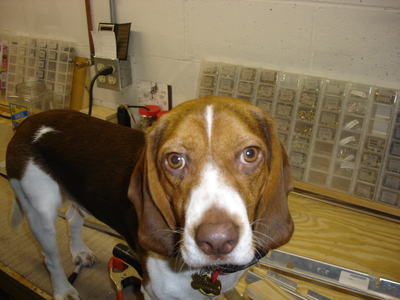Darwin's post on his neighbor who is putting in lightening holes everywhere got me thinking (again) about something I've been considering for a while...cutting lightening holes in the seat backs to reduce some weight. I first thought of this after seeing a picture of the RV-12 seat backs which already come with a bunch of lightening holes.
Based on the corrugated design of the sheet, much of the flat portion could be removed without compromising the bending strength of the seat back. They way they are currently designed, the tip of the V bends would fail way before the flat portions of the sheet anyway. Cutting lightening holes would just make the stresses more uniform between the tips of the V bends and the flat portions. Yes, I'm an engineer, but I haven't done any calculations to back this up. I'd probably just use the TLAR method.
The weight savings seems like it could be considerable. Say I cut 5 holes of 1.5" diameter in each flat section:
.75 rad ^2 * pi * .025 thick * 5 holes per zone * 6 zones * .094 lb/in^3 aluminum density * 2 seats * 16 oz/lb = 4 oz weight savings
Another nice aspect of this modification is that since it's close to the center of the CG range, it would have negligible effect on the CG.
So the questions I've got for the group are:
What do you guys think about the idea?
Is it worth the effort?
Has anyone done this before?
Can anyone think of any downside that I haven't yet?
Thanks!
Based on the corrugated design of the sheet, much of the flat portion could be removed without compromising the bending strength of the seat back. They way they are currently designed, the tip of the V bends would fail way before the flat portions of the sheet anyway. Cutting lightening holes would just make the stresses more uniform between the tips of the V bends and the flat portions. Yes, I'm an engineer, but I haven't done any calculations to back this up. I'd probably just use the TLAR method.
The weight savings seems like it could be considerable. Say I cut 5 holes of 1.5" diameter in each flat section:
.75 rad ^2 * pi * .025 thick * 5 holes per zone * 6 zones * .094 lb/in^3 aluminum density * 2 seats * 16 oz/lb = 4 oz weight savings
Another nice aspect of this modification is that since it's close to the center of the CG range, it would have negligible effect on the CG.
So the questions I've got for the group are:
What do you guys think about the idea?
Is it worth the effort?
Has anyone done this before?
Can anyone think of any downside that I haven't yet?
Thanks!
Last edited:











